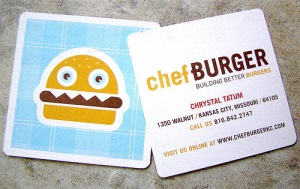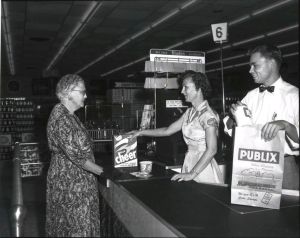
I received a mailer recently that impressed me – not with its creativity or call to action, but at how poorly it was planned out and conceived. I shared this on my personal Facebook page, and one of my print colleagues urged to turn it into a blog post. I’ve been absent from my blog for a while due to health and personal reasons, so I was inspired to take up the pen (or pull out the keyboard) and write.
This mailer was a survey done by the Orange County (CA) Supervisor Andrew Do. A tri-fold mailer with a perf where you could tear off the survey and return it. But as I started to fill it out, I noticed three major errors in the planning and execution of this mailer, and I wish to share them here to enlighten those who may be planning a return mailer.
- Problem: It was printed on coated cover stock. How many times have you had something on a coated stock, which made it damn near impossible to write on it with ink or the newer gel ink pens? You have to use a Sharpie, and how many people have those lying around? And if they do, they’re probably the regular Sharpies, not fine tip Sharpies that you can write with. (As you can see from the image above, I did start to fill it out using a Sharpie, but stopped when I wondered if there was a website I could go to and do the same thing).
- Solution: print on uncoated cover stock, or use a pencil-receptive aqueous coating. Yes, coated sheets have a better “look” than an uncoated, but you’ve made the whole piece a challenge for a recipient to fill out.

- Problem: you have to mail it back and affix a first-class stamp to it.
- Solution: really, the solution was to make it a postage-paid return piece, if you really want the recipient to return it. Several people (including myself) these days do not purchase stamps, because we do most if not all of our bill-paying online.
- Problem: there is no link provided to a website that would allow us to fill out this survey, and, for the senders, capture data.
- Solution: create a site or a landing page on a site where the recipients of the mailer can go and fill out the survey, providing their name, phone and address as well. You will probably get a greater response, and you can capture the data.
Now, granted, this is more of a rant, but it does bring up some obvious points, and spell out some things that could have been executed better by both the office that ordered the printing, and the printer who provided it. Of course, there may have been budgetary restraints that may have removed some of the many items that I have pointed out here that could have improved the piece.
Mailings with thought behind them, and with the means to respond to a call-to-action via an online portal, allow for better engagement of the recipient. As a print buyer, you need to think about the complete process from the print until it ends up in the recipient’s hands, and as a printer, you should be advising your clients on the best ways to produce a printed piece.
—

 OK. That does sound like a title for yet another Holiday-themed movie. But in a way, print did save Christmas – or at least helped create the Christmas traditions that we enjoy today.
OK. That does sound like a title for yet another Holiday-themed movie. But in a way, print did save Christmas – or at least helped create the Christmas traditions that we enjoy today.

 When I was a kid, the highlight of my year was the arrival of the Sears “Wish Book” – the catalog to end all catalogs. I’d eagerly scour the toy section (always at the front) to create my wish list of gifts. Of course, I’d list 15-20 items, knowing that Santa did not have enough space on his sleigh to bring EVERYTHING (that’s what my parents told me), so I wanted to give him a broad selection.
When I was a kid, the highlight of my year was the arrival of the Sears “Wish Book” – the catalog to end all catalogs. I’d eagerly scour the toy section (always at the front) to create my wish list of gifts. Of course, I’d list 15-20 items, knowing that Santa did not have enough space on his sleigh to bring EVERYTHING (that’s what my parents told me), so I wanted to give him a broad selection. are both wine catalogs, most likely being driven by my activity on liquor.com. But it’s shrewd marketing: send to a specific demographic a catalog that is within that person’s field of interest. And with catalogs, I can browse easily, then go to the site to make my purchase. Even though a print catalog may not have all the product in it you find online, it can spur someone to research deeper into the retailer’s site, and perhaps generate a sale.
are both wine catalogs, most likely being driven by my activity on liquor.com. But it’s shrewd marketing: send to a specific demographic a catalog that is within that person’s field of interest. And with catalogs, I can browse easily, then go to the site to make my purchase. Even though a print catalog may not have all the product in it you find online, it can spur someone to research deeper into the retailer’s site, and perhaps generate a sale.

 takes their business to a competitor, or reduces the amount of print they purchase. Suddenly, an experienced rep is bringing in half of the sales and revenue that they used to. Not only does that mean a reduction in your commission (and income), but your sales manager or company owner now might see you as a liability, not an asset. So, how do you prospect? How do you get new leads? How do you TALK to the “new” print buyer? All of these things are part of a well-established sales training program, and if you spend time every week in some form of training, it can keep you fresh and alive.
takes their business to a competitor, or reduces the amount of print they purchase. Suddenly, an experienced rep is bringing in half of the sales and revenue that they used to. Not only does that mean a reduction in your commission (and income), but your sales manager or company owner now might see you as a liability, not an asset. So, how do you prospect? How do you get new leads? How do you TALK to the “new” print buyer? All of these things are part of a well-established sales training program, and if you spend time every week in some form of training, it can keep you fresh and alive. For example, I followed two great training programs, both online, and both with a “free” level of access that used YouTube videos and podcasts. If you chose to go deeper into training, these sources offered courses ranging in price from $45 to $600 (dependent on the course length and scope). I gained valuable insight from the free content, but I knew that I’d receive in better insight and one-on-one coaching from these sources with their paid courses. So, here’s a listing of the three top print sales coaches/trainers that I’d recommend:
For example, I followed two great training programs, both online, and both with a “free” level of access that used YouTube videos and podcasts. If you chose to go deeper into training, these sources offered courses ranging in price from $45 to $600 (dependent on the course length and scope). I gained valuable insight from the free content, but I knew that I’d receive in better insight and one-on-one coaching from these sources with their paid courses. So, here’s a listing of the three top print sales coaches/trainers that I’d recommend: I know that my posts are pretty much exclusively about print, but honestly, I do have a life outside of ink ‘n’ paper.
I know that my posts are pretty much exclusively about print, but honestly, I do have a life outside of ink ‘n’ paper. Does anyone remember a smartphone application from just a few years ago called Bump? With this application, the idea was that you would “bump” another person’s smartphone (if they also had Bump) and it would exchange contact information. I remember someone saying “no need for business cards anymore.” Well, what happened to Bump, or the countless other applications that are meant to transfer information from someone’s business card straight into your phone’s contacts. That sounds cool, but you know what? It
Does anyone remember a smartphone application from just a few years ago called Bump? With this application, the idea was that you would “bump” another person’s smartphone (if they also had Bump) and it would exchange contact information. I remember someone saying “no need for business cards anymore.” Well, what happened to Bump, or the countless other applications that are meant to transfer information from someone’s business card straight into your phone’s contacts. That sounds cool, but you know what? It  most likely in a diminished capacity. And the business cards of the future will incorporate more augmented reality, and ways to get you to engage with your handheld device. But here in the early 21st century, business cards do two things very well, and they do them much better than a smartphone application or Google contact list:
most likely in a diminished capacity. And the business cards of the future will incorporate more augmented reality, and ways to get you to engage with your handheld device. But here in the early 21st century, business cards do two things very well, and they do them much better than a smartphone application or Google contact list: Make it square – sure, it won’t fit into your standard business card holder booklet you buy at Staples, but it will stand out, and the recipient may even keep it out, simply because of the size and the uniqueness. Another option is make it portrait format, instead of the usual landscape format.
Make it square – sure, it won’t fit into your standard business card holder booklet you buy at Staples, but it will stand out, and the recipient may even keep it out, simply because of the size and the uniqueness. Another option is make it portrait format, instead of the usual landscape format. embossed or debossed, or with a foil applied, or both. Combine it with a thick stock and it will have a very dynamic impact. Perhaps having a bit of a die-cut element as well, like an angled corner. Try anything to make the card different.
embossed or debossed, or with a foil applied, or both. Combine it with a thick stock and it will have a very dynamic impact. Perhaps having a bit of a die-cut element as well, like an angled corner. Try anything to make the card different. Sometimes, a trip to the grocery store can lead to an idea for a blog post. I like where I do our grocery shopping: the store is clean, always well-stocked, and the clerks are friendly. The young man bagging our groceries this morning was polite, wishing my teenage son and I a nice day. And that inspired me to share with my son the value of good customer service, and where I learned that.
Sometimes, a trip to the grocery store can lead to an idea for a blog post. I like where I do our grocery shopping: the store is clean, always well-stocked, and the clerks are friendly. The young man bagging our groceries this morning was polite, wishing my teenage son and I a nice day. And that inspired me to share with my son the value of good customer service, and where I learned that. that the custodian had called in sick and would I come in and clean BEFORE I did my regular shift, I would. But if I had another takeaway from all of this was the little fragile lady that none of the others baggers wanted to help. She was very insistent that we bag her groceries ONLY in the small paper bags, and ONLY putting in one layer of cans at the bottom, nothing else. She would always request this of each of us by saying “Can you please….” For a while, I too thought she was a persnickety old woman. Then I decided one day to do it the way she requested. And not only that, I went beyond that, always making sure that if I was on duty and I saw her that I bagged her groceries. Soon, this persnickety old woman started to smile, and make light conversation, and was pleasant. She even insisted on tipping me (we weren’t allowed to take tips). But what was important to me was that she was being taken care of as she expected to be. The reward was that she was happy. And, that made Leon happy. And more than once he pulled me aside to thank me for taking care of her.
that the custodian had called in sick and would I come in and clean BEFORE I did my regular shift, I would. But if I had another takeaway from all of this was the little fragile lady that none of the others baggers wanted to help. She was very insistent that we bag her groceries ONLY in the small paper bags, and ONLY putting in one layer of cans at the bottom, nothing else. She would always request this of each of us by saying “Can you please….” For a while, I too thought she was a persnickety old woman. Then I decided one day to do it the way she requested. And not only that, I went beyond that, always making sure that if I was on duty and I saw her that I bagged her groceries. Soon, this persnickety old woman started to smile, and make light conversation, and was pleasant. She even insisted on tipping me (we weren’t allowed to take tips). But what was important to me was that she was being taken care of as she expected to be. The reward was that she was happy. And, that made Leon happy. And more than once he pulled me aside to thank me for taking care of her. The bottom line is that good customer service is not always a natural thing, but can be taught. The reward for it is happy customers. And happy customers become loyal customers. They become customers that will forgive hiccups along the way. They become customers that refer you to someone else. Yes, we can give lip-service to customer service, or do it JUST ENOUGH to get by. But when you go beyond, and really take care of the client, the client rewards you by staying.
The bottom line is that good customer service is not always a natural thing, but can be taught. The reward for it is happy customers. And happy customers become loyal customers. They become customers that will forgive hiccups along the way. They become customers that refer you to someone else. Yes, we can give lip-service to customer service, or do it JUST ENOUGH to get by. But when you go beyond, and really take care of the client, the client rewards you by staying. When I began this blog, my primary intent was to be a voice from within the printing industry (the “print trenches” as I have in my header) to readers who are clients, prospective clients, designers, or anyone that has an interest in printing. Therefore, I tend to focus most of my posts to an audience that might need information, whether it’s about file prep, or paper, or even printing vocabulary. And today, I wish to take my readers on tips that I believe will make your print project – and you – successful.
When I began this blog, my primary intent was to be a voice from within the printing industry (the “print trenches” as I have in my header) to readers who are clients, prospective clients, designers, or anyone that has an interest in printing. Therefore, I tend to focus most of my posts to an audience that might need information, whether it’s about file prep, or paper, or even printing vocabulary. And today, I wish to take my readers on tips that I believe will make your print project – and you – successful. First and foremost, the devil is in the details. Long ago I learned that when a client gives a printer specs for a pending job, they are in the conceptual stage – and quite possibly, they don’t have files or an idea of the final specs of the piece. And that’s OK. It’s OK to get your printer to work up a quote or quotes based on concepts so you can get a general idea of what the budget may need to be. But, to insure that your project stays on budget, whenever you change the specifications of the job, make sure that is communicated to the printer. They can work up a new quote based on your revised specs, and that can be the new “budget” amount. Or, it can help you and your team determine that your initial concept – which might be less expensive – is better for the budget.
First and foremost, the devil is in the details. Long ago I learned that when a client gives a printer specs for a pending job, they are in the conceptual stage – and quite possibly, they don’t have files or an idea of the final specs of the piece. And that’s OK. It’s OK to get your printer to work up a quote or quotes based on concepts so you can get a general idea of what the budget may need to be. But, to insure that your project stays on budget, whenever you change the specifications of the job, make sure that is communicated to the printer. They can work up a new quote based on your revised specs, and that can be the new “budget” amount. Or, it can help you and your team determine that your initial concept – which might be less expensive – is better for the budget.
 Finally, printing is a science and a craft, and is done by humans on machines, which sometimes break down. Or you might find your 1 PM press check at 5 PM because the client on press before you made several color shifts, taking their 20 minutes for each press check and turning into 45 minutes. Or your printer may be unable to make the delivery date, but is offering to do partials. Things happen. And on the rare occasions when something on your print project goes bad, just take a deep breath and listen to the solution your printer offers up (and printers SHOULD and MUST have a solution or solutions ready to share with you!) Presses go down. Paper doesn’t show up. Issue with the plates. A post-press finishing vendor is slammed. All these things can impact your project. Learning to roll with it, and finding solutions with your printer, will enhance your relationship with them, and make you a favored client.
Finally, printing is a science and a craft, and is done by humans on machines, which sometimes break down. Or you might find your 1 PM press check at 5 PM because the client on press before you made several color shifts, taking their 20 minutes for each press check and turning into 45 minutes. Or your printer may be unable to make the delivery date, but is offering to do partials. Things happen. And on the rare occasions when something on your print project goes bad, just take a deep breath and listen to the solution your printer offers up (and printers SHOULD and MUST have a solution or solutions ready to share with you!) Presses go down. Paper doesn’t show up. Issue with the plates. A post-press finishing vendor is slammed. All these things can impact your project. Learning to roll with it, and finding solutions with your printer, will enhance your relationship with them, and make you a favored client.